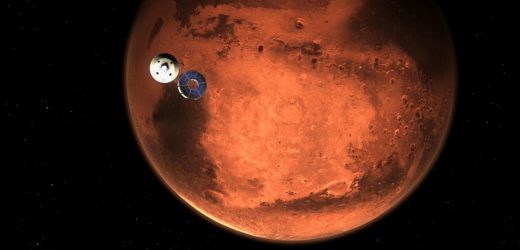NASA Mars Perseverance rover provided valuable data: Former astronaut
Mechanical engineering professor Mike Massimino discusses the complex mission to the Red Planet on ‘Your World’
It has been almost a month since the Perseverance Mars rover successfully landed on the red planet to the cheers of scientists and onlookers millions of miles away.
The rover has been kept busy since touching down in the northeastern Jezero Crater and has run multiple tests in preparation for its next missions, unfurling its mechanical arm and observing its new home.
NASA TO CONDUCT SECOND ROCKET TEST FOR ARTEMIS MOON MISSIONS
Perseverance, or “Percy,” is tasked with searching for traces of ancient microbial life in addition to collecting and caching samples for later return to Earth.
That trip is slated for no earlier than 2031 after Percy gathers around 30 tubes of Martian rock and sediment.
On March 13, the rover dropped its “belly pan,” or the protective covering that protects its sampling system.
In addition, the rover has been harboring a stowaway for its second mission: the first-ever Mars helicopter aptly named Ingenuity — to be tested in June.
While one of the next steps for Percy and NASA’s Jet Propulsion Laboratory engineers is to drive from the newly-named “Octavia E. Butler Landing” site to a place to test Ingenuity, the rover has been able to accomplish a lot.
With advanced, high-definition imaging from its SuperCam and audio recording capability, all-new images and sounds have been beamed back to Earth to the wonderment of scientists and civilians alike.
The SuperCam is a rock-vaporizing instrument that is mounted on the “head” of the rover’s mast and will play an active role in selecting which rocks are worthy of examination.
In a joint news conference with France’s Centre National D’Etudes Spatiales (CNES) updating the public on their progress, NASA released audio of wind and the rover’s laser hitting Máaz, one of its first rock targets, in addition to some of its first SuperCam Remote Micro-Imager (RMI) readings.
The historic recordings were released on March 10 and now each have more than 900,000 plays on the NASA SoundCloud page.
Just a few days earlier, NASA announced that Percy had performed its first drive on the Martian planet’s surface covering 21.3 feet.
By surveilling the terrain, scientists have determined that several of the rocks they’ve spotted are chemically similar to volcanic rocks and that wind and water have eroded them.
CLICK HERE FOR THE FOX NEWS APP
Geologists told the scientific journal Nature that the wind patterns appeared to have blasted the rocks primarily from the northwest and that darker colored rocks that could have been weathered by water might have tumbled in the ancient river delta that once flowed through the crater and its lake.
Although much of Mars’ astrobiological history still remains unknown, Percy has been able to give researchers a closer look — providing crucial data for future missions.
Source: Read Full Article



